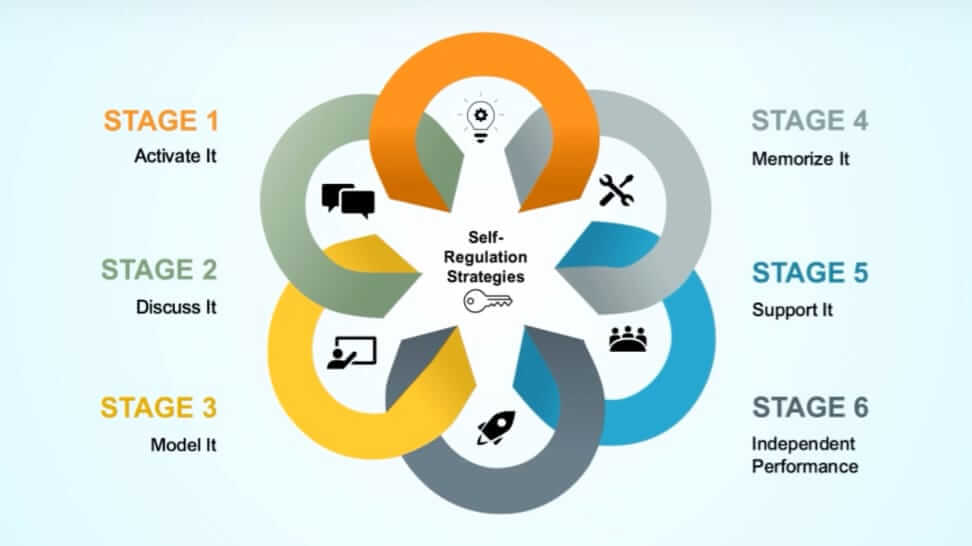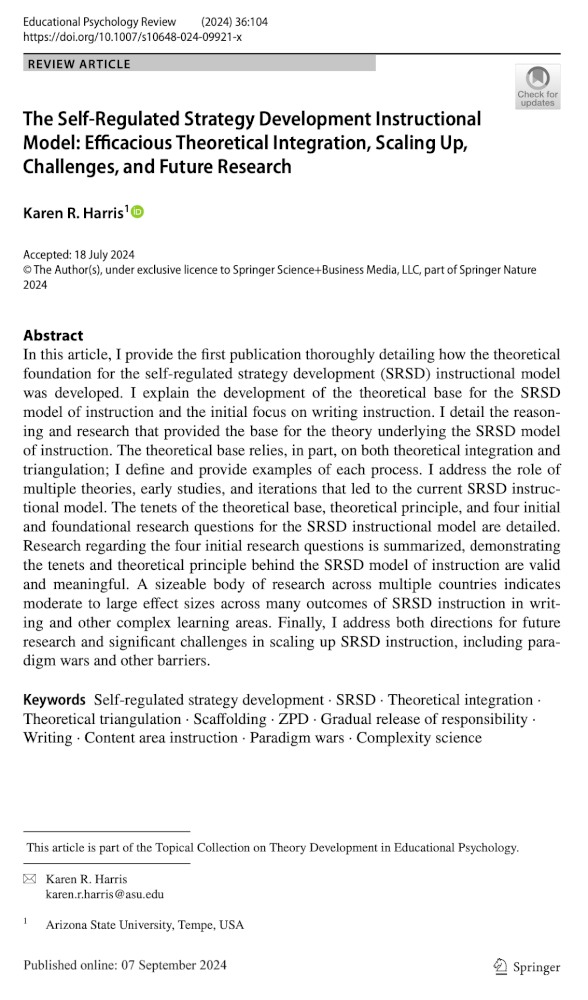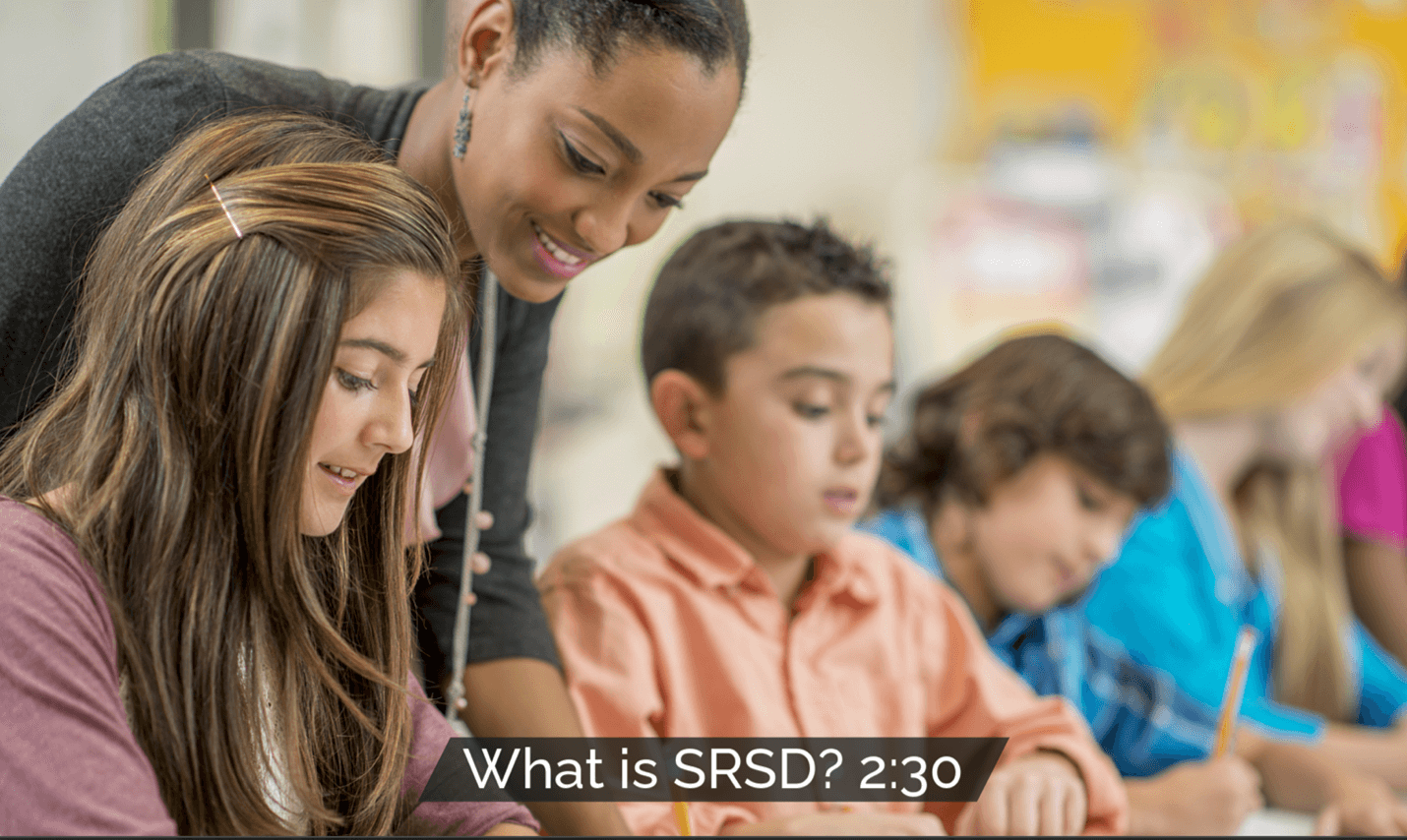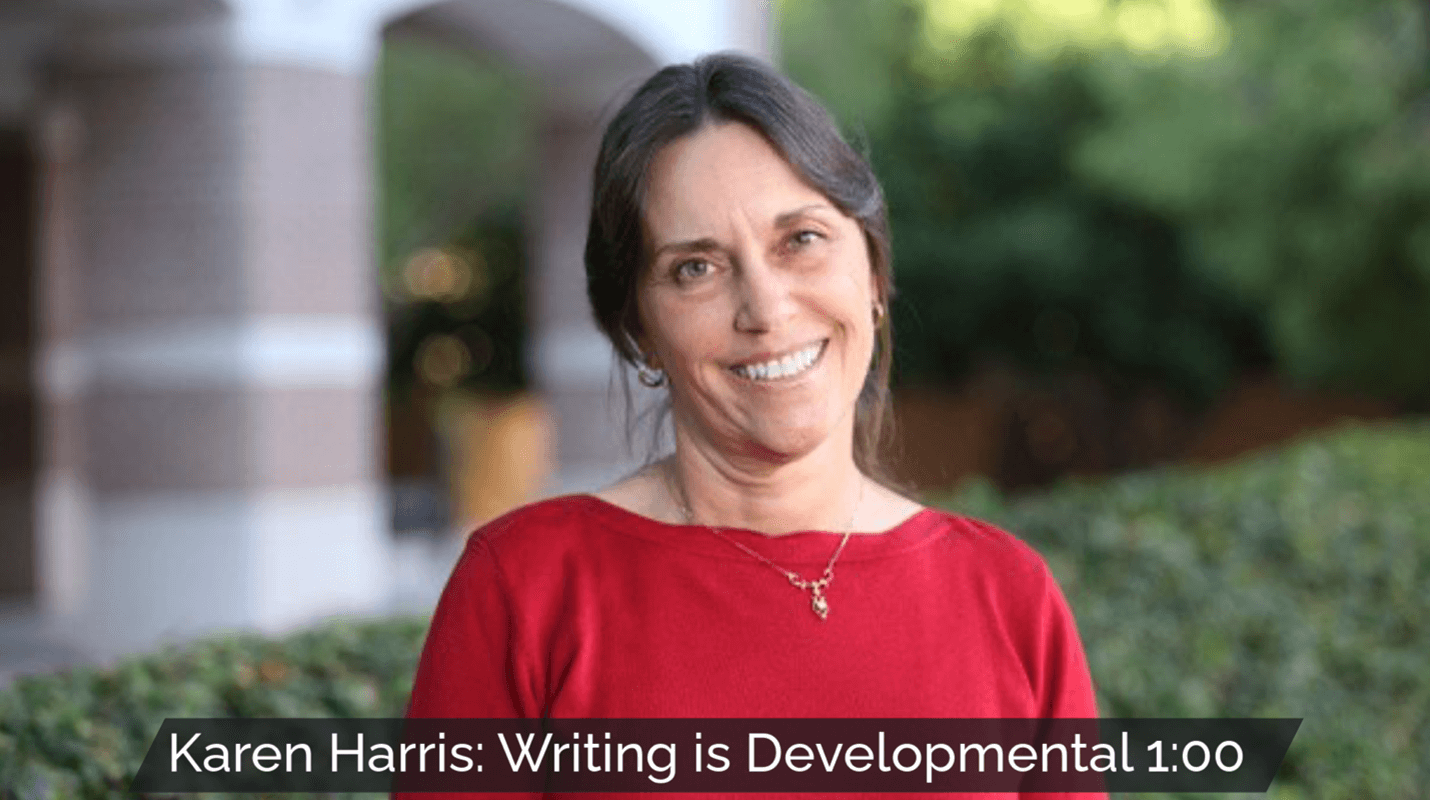What Is the SRSD Writing Method?
SRSD is an evidence-based practice for writing that comprises a six-stage instructional framework of powerful strategies for student success.
Teaching Writing with the Six Stages of SRSD

“SRSD is effective because it combines explicit, structured learning stages with a focus on mastery. Students are not allowed to fail as they go through the process. This approach builds students’ confidence and motivation.”
Dr. Karen Harris
SRSD Creator, Arizona State University
SRSD Writing: An Evidence-Based Approach to Teaching Writing
Self-Regulated Strategy Development (SRSD) is designed to enhance students’ abilities through six structured stages of learning. These recursive stages allow students to revisit and strengthen their understanding while moving at their own pace. A central feature of Self-Regulated Strategy Development for writing is its focus on modeling, using the “I do, we do, you do” approach.
- Six structured stages of learning
- Self-regulation strategies for students
- Focus on modeling: “I do, we do, you do”
Improved Performance and Confidence in Writing
Mastery is achieved by ensuring students fully grasp and effectively apply each writing strategy before advancing to the next lesson or stage of SRSD. All students receive differentiated writing instruction to help them meet individual and class-wide goals. Multiple studies demonstrate improved student writing quality and confidence as well as teacher self-efficacy. Moreover, SRSD instruction emphasizes self-regulation, empowering students to take control of their learning.
- Mastery learning process
- Emphasis on self-regulation
- Integration with existing curricula
SRSD: Beyond Teaching Writing
Self-Regulated Strategy Development writing instruction is more than an evidence-based approach to teaching genre and essay writing. SRSD builds metacognitive awareness, resilience, and critical thinking skills. By addressing these broader learning and personal growth aspects, SRSD equips students with tools for lifelong learning and effective problem-solving.
- Self-Regulation
- Self-Assessment
- Self-Monitoring
- Self-Reinforcement
- Self-Efficacy
- Goal Setting
- Strategic Planning
- Collaborative Learning
- Positive Self-talk
- Motivation and Beliefs
- Metacognition
- Persistence and Resilience
- Critical Thinking
- Social-Emotional Learning
“SRSD is extraordinarily effective because it builds essential self-regulation skills and motivation. Our results show remarkable improvements across diverse student groups, maintaining gains over time and across various settings.”
Dr. Tanya Santangelo
Associate Professor, Arcadia University
Dr. Karen Harris
Teaching Writing in Every Grade
Dr. Karen Harris developed SRSD writing for every classroom.
She has devoted her career to transforming writing instruction for educators. She developed SRSD writing interventions to equip teachers with the most effective evidence-based writing and learning practices for their classrooms. Through her pioneering research and advocacy for practice-based professional development (PBPD), she made her insights widely accessible, trained a network of researchers to broaden SRSD’s impact, and supported colleagues in advancing their independent work. Her efforts have brought SRSD writing to the forefront of educational practice.
Watch Dr. Karen Harris discuss the developmental nature of writing.
"Over the past 40 years, developing SRSD and advancing writing instruction alongside my dedicated colleagues has been an incredibly rewarding journey. There's nothing more fulfilling than witnessing how it transforms learning and writing in the classroom by seeing a child’s eyes light up."
Dr. Karen Harris
SRSD Creator and Regents Professor Emeritus, Arizona State University
Pioneers of SRSD Writing: The Work of Karen Harris and Steve Graham

Dr. Karen Harris developed the foundation for SRSD in the 1980s based on a multi-theoretical and strategic approach to learning. She constructed a framework of strategies for explicit instruction combined with self-regulation techniques, such as goal setting and self-assessment, empowering students to take control of their learning process.
Later in the 1990s and 2000s, Karen and Steve broadened her research on SRSD for writing beyond special education to support a variety of students, showing that SRSD improves writing quality across grade levels and abilities.
Social-Emotional Learning
Social-emotional learning has been effectively integrated into SRSD writing interventions, helping students manage their emotions during the writing process—a frequent source of anxiety and frustration. SRSD teaches students to set realistic goals, use self-talk to navigate challenges and celebrate their achievements, and cultivate social skills such as empathy, respect, and cooperation through peer reviews and collaborative writing.
Contributions to the Science of Writing
Research has consistently highlighted SRSD’s effectiveness, with studies conducted across the United States and five continents. SRSD is an important component of the Science of Writing, as rigorous research has validated its impact on student writing outcomes and teacher self-efficacy. As new findings emerge and educational needs evolve, the SRSD model continues to answer the challenge.
Legacy and Future Directions
As SRSD continues to be the subject of international research, it remains a practical framework for educators to enhance writing instruction. It represents the legacy of Drs. Harris and Graham and the impact on classroom practices. Their work has shaped countless educational careers, improving writing outcomes for generations of students. With evolving educational technology and ongoing research exploring digital implementations and adaptations, SRSD is vital to the Science of Writing.
What's Next for SRSD Writing?
The Self‐Regulated Strategy Development Instructional Model: Efficacious Theoretical Integration, Scaling Up, Challenges, and Future Research

Dr. Karen R. Harris
July 18, 2024
Abstract: “In this article, I provide the first publication thoroughly detailing how the theoretical foundation for the self-regulated strategy development (SRSD) instructional model was developed. I explain the development of the theoretical base for the SRSD model of instruction and the initial focus on writing instruction. I detail the reasoning and research that provided the base for the theory underlying the SRSD model of instruction.”
Go to Study







